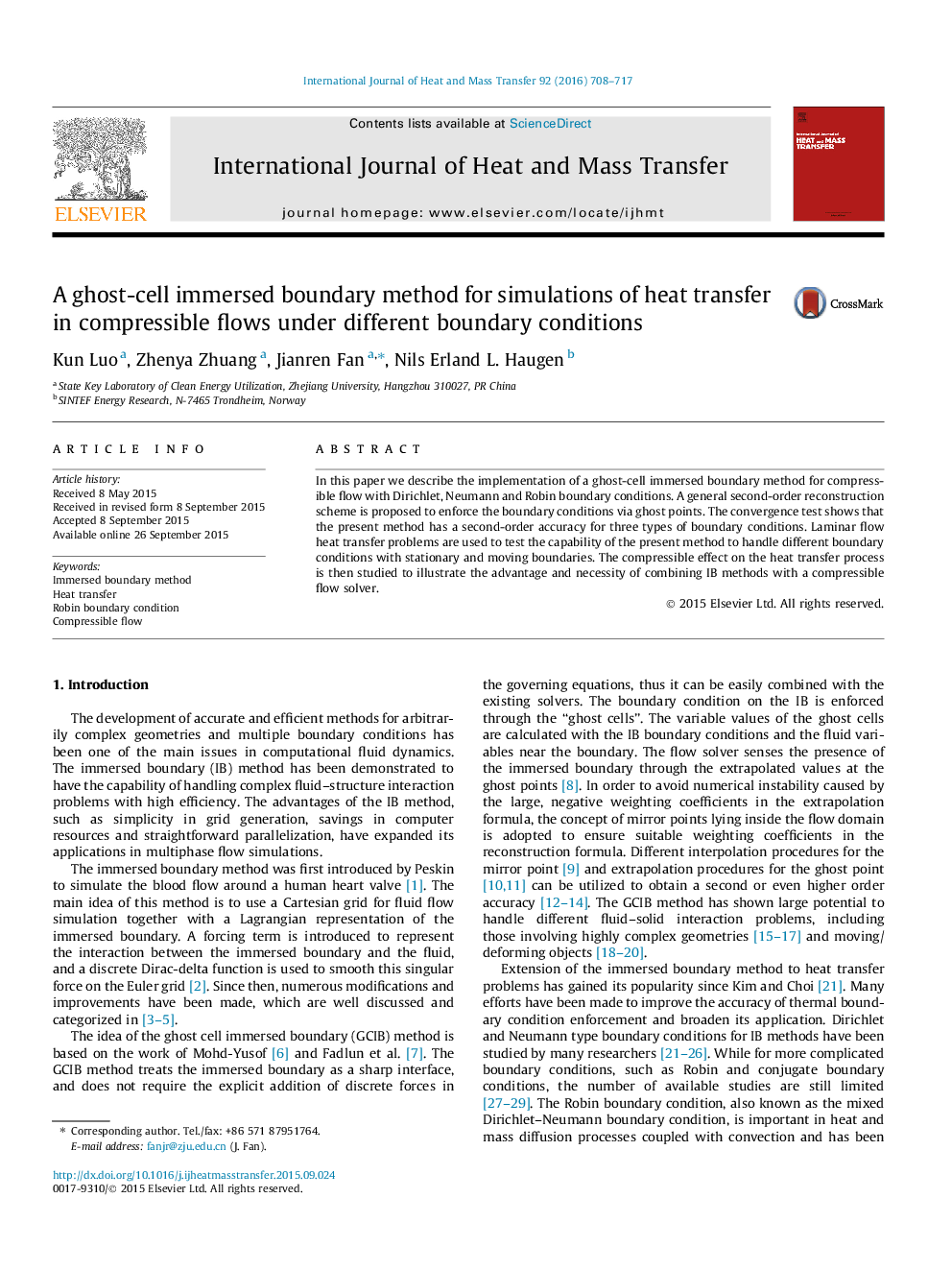| Article ID | Journal | Published Year | Pages | File Type |
|---|---|---|---|---|
| 656574 | International Journal of Heat and Mass Transfer | 2016 | 10 Pages |
•The present GCIB method is capable of handling three types of boundary conditions.•The method is second-order accurate for all boundary conditions.•The present method is designed for compressible flows with large temperature ratios.
In this paper we describe the implementation of a ghost-cell immersed boundary method for compressible flow with Dirichlet, Neumann and Robin boundary conditions. A general second-order reconstruction scheme is proposed to enforce the boundary conditions via ghost points. The convergence test shows that the present method has a second-order accuracy for three types of boundary conditions. Laminar flow heat transfer problems are used to test the capability of the present method to handle different boundary conditions with stationary and moving boundaries. The compressible effect on the heat transfer process is then studied to illustrate the advantage and necessity of combining IB methods with a compressible flow solver.
